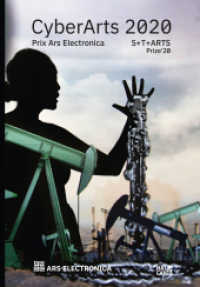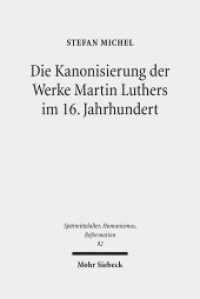- ホーム
- > 洋書
- > 英文書
- > Transportation
Full Description
In this Element, the gas-particle flow problem is formulated with momentum and thermal slip that introduces two relaxation times. Starting from acoustical propagation in a medium in equilibrium, the relaxation-wave equation in airfoil coordinates is derived though a Galilean transformation for uniform flow. Steady planar small perturbation supersonic flow is studied in detail according to Whitham's higher-order waves. The signals owing to wall boundary conditions are damped along the frozen-Mach wave, and are both damped and diffusive along an effective-intermediate Mach wave and diffusive along the equilibrium Mach wave where the bulk of the disturbance propagates. The surface pressure coefficient is obtained exactly for small-disturbance theory, but it is considerably simplified for the small particle-to-gas mass loading approximation, equivalent to a simple-wave approximation. Other relaxation-wave problems are discussed. Martian dust-storm properties in terms of gas-particle flow parameters are estimated.
Contents
1. Introduction; 2. Conservation equations of gas-particle flows; 3. Small perturbation equations in a stationary frame; 4. Aerodynamic interpretation of acoustics in gas-particle flows; 5. Steady small-perturbation theory; 6. Some limiting cases; 7. Two-dimensional steady supersonic flow; 8. Approximate consideration based on a 'rarefied' particle cloud; 9. Particle collision with the wall and the normal force; 10. The wall-pressure coefficient; 11. Numerical examples; 12. Relation to other relaxation wave problems; 13. Concluding remarks. Appendix A. Appendix B. References.








